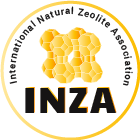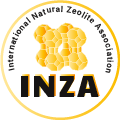MAY THE USE OF ITALIAN VOLCANIC ZEOLITE-RICH TUFFS AS ADDITIVES IN ANIMAL DIET REPRESENT A RISK FOR THE HUMAN HEALTH?
Mariano Mercurio, Alessio Langella, Piergiulio Cappelletti, Bruno de Gennaro, Vincenzo Monetti, Maurizio de’ Gennaro
Periodico di Mineralogia (2012), 81, 3, 393-407
DOI 10.2451/2012PM0023
ABSTRACT
In Europe the use of zeolite-rich tuffs as additives in animal feeding is well established and ratified by legislation. Quality checks on batches are mandatory to determine the undesirable elements such as lead that, among the heavy metals, plays a primary role for its devastating effects on the life quality of living beings. The present study aimed at determining the total and leached Pb for different samples of Campanian zeolite-rich tuffs related to the most relevant volcanic eruptions (Campanian Ignimbrite and Neapolitan Yellow Tuff). Other samples deriving from other Italian and extra-european exploitation sites were used for comparative tests. The research demonstrated that lead occurrence is linked to the specific paragenesis of the investigated rocks whereas the leached Pb largely depends on the type of zeolite and its amount. It was also established that the use of Campanian zeolite-rich tuffs as additives in animal feeding can be tolerated as these materials are well comparable to analogous products from the minerogenetic point of view such as the clinoptilolite of volcanic origin.





